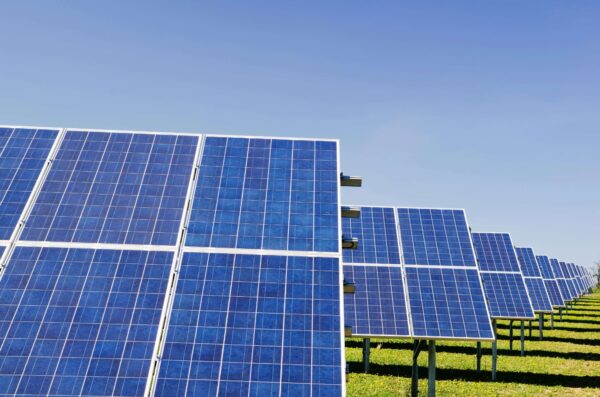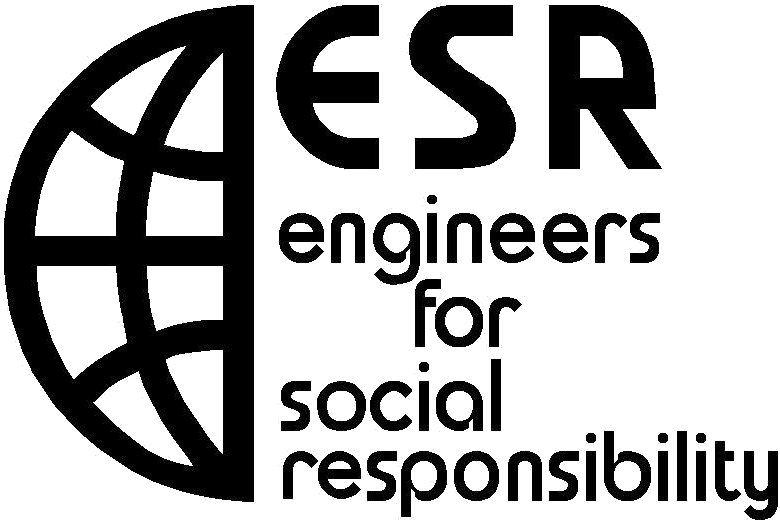Submission in response to proposed changes in NZ ETS Regulations 2025
Proposed Changes to NZ ETS Regulations 2025
About Engineers for Social Responsibility Inc.
ESR is an independent group of engineers who consider that being knowledgeable in the field of technology means that they also have a special obligation to the public at large in matters that relate to engineering, or that can be addressed using engineering approaches. Given the urgency of the issue, for some time now the organization has been particularly focused on how to respond to the climate crisis by reducing emissions and concentrations of greenhouse gases in the atmosphere.
The key authors of this report are members of ESR with strong experience and qualifications in engineering, and a broad knowledge in relation to global heating, what is causing it and how it can be addressed.
Introduction
This submission relates to the Ministry for the Environment (MfE) consultation document "Proposed changes to the New Zealand Emissions Trading Scheme (ETS) regulations 2025". In this document the MfE raises a number of specific issues. But we consider that there are also much more important steps that need to be taken so that we can start reducing our emissions at a significantly more rapid rate with the aim of meeting emissions reduction targets set by the IPCC and others. This is what we primarily cover in our submission.
1. Current NZ targets too low to meet IPCC goals and NDC targets
Because our ETS is the primary tool we currently have for driving emissions reductions, we also need to consider whether our current reduction targets are appropriate.
In its March 2023 AR6 Synthesis Report, the Intergovernmental Panel on Climate Change (IPCC) says that to have some chance of holding global warming to 1.5°C, by 2030 we need reductions below 2019 levels of 43% for all greenhouse gases (GHG) and 48% for CO2. It has also proposed that we aim even higher than this, with a 50% reduction in GHG emissions over the 2019-2030 period. In its April 2022 report the IPCC concluded that to limit global warming to 1.5°C, coal use should fall by nearly three-quarters between 2020 and 2030.
As a developed country with the necessary skills and resources, it would make sense for us to be aiming to try and meet the IPCC goals, at least for CO2 emissions, though doing so for overall GHG emissions is more of a challenge because of our high methane emissions from the agricultural sector. Also, many climate scientists believe that the opportunity to stay below 1.5°C of warming has now closed, which means we need even stronger action to protect our planet.
New Zealand is reportedly on track to meet its own target of reducing GHG emissions to 31% below 2019 levels by 2030, as outlined in MfE’s December 2024 publication, “New Zealand’s second emissions reduction plan” (ERP2). This is a smaller figure than the 43% reduction that the IPCC is calling for, but there is actually a major problem in making the comparison using the New Zealand figures, as currently presented.
Our understanding is that the New Zealand emissions reduction figures were arrived at by using ‘target accounting’ measures for net emissions. These cannot be directly compared with the standard net emissions measurements used by the IPCC and most other countries. Also, how these ‘target accounting’ emissions figures are derived does not seem to be explained clearly enough to allow a simple comparison.
From information supplied by Dr Geoff Bertram, who has significant skills in this area, while the WEM (with existing measures) December 2023 figures that the Government has derived show a reduction in target accounting net emissions of 31% over the 2019-2030 period, when these target net figures are converted to WEM December 2023 standard net figures, as used by the IPCC and others, the standard net emissions reduction is 9% - far less than the 43% reduction the IPCC says is needed, and even further below the 50% reduction it recommends we aim for.
Hence, based on the available information, our current target for emissions reductions over the 2019-2030 period is far weaker than what the IPCC says is required. We need to rapidly re-set our emissions budgets with goals that are a lot closer or will meet the IPCC’s specified targets.
2. Higher charges needed to drive emission reductions
The price of New Zealand Units (NZUs), which are used to pay for emissions under our ETS, has fluctuated between around $45 and $75 per tonne CO2-equivalent during the year ending in early June 2025, finishing at around $55.
Going beyond the current period, the MfE ERP2 plan involves raising the price of NZUs to $75 in 2028, but then letting it fall back to a long-run price of $50 per tonne. Also, in its 2025 advice on NZ ETS unit limits and price control settings for 2026-2030, the Climate Change Commission (CCC) advises that the ETS price controls – the auction reserve price (ARP) and the cost containment reserve price (CCR) - remain at their current levels, adjusted only for inflation, so as to align with the Government’s emission reduction targets. Hence it appears that the CCC is not pushing for targets more in line with what the IPCC says is needed, which seems rather extraordinary.
Based on the available information, the NZU prices given above are far too low to drive the necessary emissions reductions for us to meet internationally set targets, even specifically for CO2 emissions, and to make an appropriate contribution to controlling global warming. In its 2018 Special Report on Global Warming of 1.5°C (SR15), the IPCC said that carbon charges needed to be in the range of US$135 (approx. NZ$223), rising to US$5,500 (approx. NZ$9,075) by 2030, though this last figure seems to be rather steep.
NZU prices are also currently way below the estimated cost of the damage that the emissions are causing. There have been lots of figures published for this damage cost, some of which are very high, but one that has been regularly referred to is the US Environmental Protection Agency December 2023 figure of US$190 / ton CO2. After converting US tons to metric tonnes and US$ to NZ$ (based on June 2025 figures), this gives a damage cost of NZ$346 / tonne CO2.
What this means is that New Zealand businesses are currently being massively subsidised for the damage their emissions are causing. This damage is going to seriously affect all of us unless New Zealand and other countries take strong action to reduce emissions.
Quite a lot of other countries already have significantly higher emissions charges than we do. For example, charges in some other areas are currently: European Union €73 (approx. NZ$138), UK £50 (approx. NZ$113), and Sweden SEK 1,510 (approx. NZ$251). Sweden introduced its carbon tax in 1991. Compared to 1990 levels, by 2021 its gross emissions had fallen by 33%, while ours had increased by around 21% (based on our 1990-2023 greenhouse gas emissions data). Beyond that, EU Climate Action has deduced that by 2022 Sweden’s net emissions were 86% below 1990 levels. Over the same period, our net emissions had increased by around 35%.
Some countries are planning to put financial border adjustments on imported goods coming from countries with lower carbon charges. For example, the EU is in the process of introducing a Carbon Border Adjustment Mechanism (CBAM) that is due to be fully in place by 2026. The importation of some items into Europe will then require the purchase and surrender of CBAM certificates to account for the difference in carbon charges between the EU and the country where the goods were produced.
For New Zealand to do its part in controlling global warming, we need to be taking strong steps towards meeting the IPCC targets. With the ETS currently being our primary tool for driving emissions reductions, this means that we need to start making major increases in our carbon charges. This will also start to give us some protection against having to pay border adjustment fees on our exports.
3. Emissions reductions from higher carbon charges
Here we focus on reductions in some specific areas.
3.1 Process heat
Higher carbon charges are needed to drive many businesses into lower emissions options. For example, Fonterra is one of our largest coal users, but we understand currently has a very weak target of quitting coal use by 2037, and has so far only taken very small steps to move to other options for the supply of process heat – electricity and wood biomass.
The use of wood biomass as an energy source does lead to CO2 emissions, but these are removed from the atmosphere as further trees planted for fuel production are growing. For example, pinus radiata can be harvested about 35 years after planting. In contrast, coal formation typically takes millions of years.
As noted earlier, in 2022 the IPCC concluded that to limit global warming to 1.5°C, coal use needs to fall by nearly three quarters over the 2020 to 2030 period. To respond appropriately to this, by 2030 we need to have largely moved away from the use of coal to supply low- and medium-temperature process heat. Moving away from coal for higher temperature use is more of a challenge, and can be expected to take longer.
An appropriate increase in carbon charges can be expected to substantially accelerate the reduction of coal use by Fonterra, and by other organisations using it as a low- or medium-temperature process heat source. It can also be expected to reduce the use of natural gas for this purpose. Some other coal users, such as cement and steel manufacturers, will probably need considerably higher carbon charges, if we just rely on the ETS to drive emissions reductions.
3.2 Electricity generation
Electricity is the primary heat and power option for many people and businesses moving away from fossil fuel use, but to make this fully viable in reducing New Zealand’s total emissions, they need to be moving to electricity that is generated from renewable sources – not from fossil fuels. Reportedly, around 80-85% of our electricity is currently generated this way, but we are still using large amounts of fossil fuels for electricity generation, and particularly coal at the Genesis-owned Huntly Power Station.
According to the Genesis chief executive, Malcom Jones, Huntly is still burning 150,000 to 300,000 tonnes of coal a year, but moving to biomass is being considered.
Higher carbon charges can be expected to push faster development of renewable electricity generating options. But one problem with the renewable energy sources we are currently using is that the generating capacity they offer can vary significantly. Solar generation drops when the sun is not shining, wind generation drops when the wind is gentle, and hydro capacity drops when we go through long dry periods and lake levels fall. When these things happen, Huntly Power Station starts generating more electricity and burning more coal.
The development of tidal energy needs to be carefully considered because it would provide a very reliable power source, and could remove the need to use fossil fuels as an energy backup.
Higher carbon charges are needed to speed up the move away from coal and natural gas use to renewable options for electricity generation. Higher electrical generating capacity will also be needed as more people and businesses move to using electricity as an energy source, rather than fossil fuels.

3.3 Transport
Norway is one of the leading countries in moving to the use of electric vehicles (EVs). At the end of 2024, 28.6% of its passenger car fleet were battery powered, and 12.3% were hybrids. EV’s accounted for 89% of all new car sales in 2024.
Getting figures for New Zealand seems to be more of a challenge, but data from the EVDB website says that plug-in EVs currently account for 2.72% of our total light vehicle fleet, and data from Wikipedia says that 11.2% of 2024 new vehicle sales were plug-in vehicles. The rate of uptake of EVs had previously been somewhat higher, but the Clean Car Discount scheme, which offered rebates for purchasing new or used EVs, ended on 31 December 2023, and road user charges for EVs and hybrids were introduced on 1 April 2024.
Road vehicles currently account for around 21% of our overall carbon footprint. Significant increases in carbon charges for our ETS can be expected to result in a more rapid move to electrically powered vehicles, and a significant drop in our overall CO2 emissions.
4. Major issues with the ETS that need addressing
If New Zealand is going to keep relying on the ETS as the main tool to drive emissions reductions, then besides the need for higher emissions charges, there are other issues that need to be sorted out. The term ‘units’ refers to emission units that can be traded under the NZ Emissions Trading Register, with one surrendered for each tonne of CO2-equivalent produced.
4.1 Stability of pricing of emissions units
The cost of units currently fluctuates considerably, so there is no clear information for businesses and other entities as to what future emissions charges to expect. For example, over the year ending in early June 2025, it fluctuated from $45 to $75, ending up at around $55.
We need to move to a system under which current emissions charges are reasonably stable, and future emissions charges are clearly indicated for coming periods, so businesses and other entities can plan ahead, and take effective action.
4.2 Revenue received from the sale of emissions units
Currently some of the revenue from the sale of emissions units goes to the Government and a significant part goes to other entities that are selling off units that they have recently received, or that have been ‘stockpiled’.
We need to move to a system under which the Government will receive all or virtually all the revenue from the sale of emissions units. This will give it the necessary revenue to help compensate the public for the rising costs of goods and services resulting from higher emissions charges, with some revenue also available to assist businesses and other entities in reducing their emissions.
4.3 Reduction of the number of emissions units
According to the Climate Change Commission, there are currently too many emissions units available to allow the ETS to work effectively. This is one reason why auction prices for units frequently fall below the price levels planned by the Government to control emissions, and as a result the incentive to reduce emissions falls off and Government revenue from unit sales is reduced. It is one of the key problems with the current ETS.
We strongly agree with the CCC’s advice that it is critical that the Government reduce the ETS unit volume, and bring the price settings back into alignment with emissions reduction goals. We further recommend that the Government buys back these units at the price originally paid for them, or if that is not workable, then at the unit price in the period before the buy-back starts.
4.4 Reduction in the provision of free allocations of emissions units
Some organisations that are involved in what are categorised as ‘emissions intensive’ or ‘trade-exposed’ (EITE) activities, receive a free allocation of emissions units. Our understanding is that these free units are just effectively new units that the Government creates, and hence the total number of units available is increased.
The Sustainability Council and others have argued that the allocation of free units to emitters is too costly because the Government receives no revenue from them. The allocation of these free units is also removing the financial incentive a carbon charge would provide for the receiving organisations to reduce their emissions.
We recommend that considerably stronger steps be taken to reduce the number of freely allocated units. A workable alternative is to start charging for some or all of the emissions from an entity currently receiving a free allocation, and instead provide Government financial support to the entity so that it can take steps to reduce its emissions.
In order to stop the increase in total units available that the provision of free units currently causes, we further recommend that the free units become units of a different category, which are just returned back by the receiving organisations as their emissions are made, and are not otherwise exchangeable or saleable on the carbon market.
4.5 Agricultural emissions need attention
Agricultural activities are currently responsible for around 48% of our total emissions. New Zealand’s first emissions reduction plan (May 2022) included a set of key actions to support farmers and growers to lower these emissions. Some government support is now being offered to farmers to help achieve this, but taking positive steps to reduce these emissions is still at an early stage
A major part of New Zealand’s methane emissions is generated by farm cattle. The IPCC is calling for overall methane emissions to be reduced by around a third over the 2019-2030 period. While methane has a much shorter life in the atmosphere than CO2, it also has a much stronger effect on global warming per unit of mass.
Some work has been done to determine how these cattle emissions can be reduced. There have also previously been plans to introduce charges for livestock-related methane production, but the implementation of these keeps getting delayed, most recently in June 2024 when the current Government announced that it plans to keep agriculture out of the ETS but to “implement a fair and sustainable pricing system for on-farm agricultural emissions by 2030”. However, no details about this seem to have been given yet.
In contrast, in June 2024 Denmark announced that it plans to introduce a tax on agricultural emissions from 2030, with an initial price of €16 (around NZ$30) per tonne CO2-e, rising to €40 (around NZ$76) by 2035. It is the only country in the world that has currently shown clear plans for taking this approach.
Denmark is also advocating for a European-wide tax on agricultural emissions, in which case it would make sense to bring them under the EU’s CBAM (Carbon Border Adjustment Mechanism). If this happens, then we may well end up paying a tariff on agriculture-related exports to the EU based on the difference between what European and New Zealand farmers are paying for emissions.
Some of our farmers have already moved to a ‘regenerative’ approach to farming, which involves using soil-conserving and soil-building practices, increasing biodiversity in pastures and crops, and minimising tillage. These practices lead to healthy farming, and draw more carbon into soils, which is a positive for the climate. They can also make possible a reduction in the use of pesticides, herbicides, and other toxic chemicals. However, there do not yet seem to be any serious measures taken to promote the regenerative approach here.
Given the reduction goal the IPCC has set for methane emissions, and what may be going to happen in Europe, there is a strong case for New Zealand to seriously consider bringing in a charge for methane emissions from cattle. As in Denmark, this can have its own charge and not be part of the current ETS.
We further recommend that steps be taken to make farmers aware of the benefits of moving to regenerative and organic farming measures, which improve carbon capture in soils.

4.6 The simple carbon tax option
A simple carbon tax, as was introduced in Sweden in 1991 to cover part of its emissions, would give much clearer price signals than our ETS currently does, and would also be much simpler and cheaper to operate. In early June 2025 Swedish tax was the equivalent of around NZ$251. Over the 1990 to 2021 period, Sweden’s gross emissions fell by around 33%, while ours increased by around 21%.
We need to seriously consider moving to a simple carbon tax system, rather than the complexities and lack of pricing clarity with our current ETS.
5. Making higher carbon charges workable
5.1 Protecting the public from rising costs of goods and services
Higher carbon charges will push up the price of goods and services. To make this workable, US climate scientist James Hansen and others have recommended introducing a citizen’s dividend, funded by the revenue the government receives from carbon charges. All citizens and legal residents receive a regular dividend, with smaller payments made in relation to children.
The citizen’s dividend or bonus approach has already been introduced in Switzerland, Canada and Austria, and was earlier proposed in New Zealand by the Green Party, and more recently by the Act Party.
We strongly recommend that a citizen’s dividend be promptly introduced to help compensate the public for the increased costs of goods and services that carbon charges have already caused, and for the rising costs that will result from higher carbon charges, with a major part of the carbon charge revenue used in this way. A smaller amount can also be used to assist organisations in reducing their emissions.
Taking this step will also be a small move towards addressing the rising income inequality that we have experienced over the past 40 years, which has had serious negative effects on our society.
5.2 Assisting businesses with emissions reductions
Higher carbon charges will result in larger amounts of revenue flowing to the Government, but some businesses will struggle financially to make the changes needed to reduce their emissions, and also pay the carbon charges they are encountering.
With higher carbon charges, we recommend that some of the revenue received by the Government be used to financially assist business with making the changes needed to reduce their emissions, so that they can remain operational.
6. Clarity needed in net emissions measurements
The Government is using a ‘target accounting’ measure for net emissions, which differs from the standard net measurement used by the IPCC and most other countries. The Climate Change Commission has gone along with the Government’s choice, despite saying that it’s high-level objective for accounting is: “A robust, transparent accounting system which tracks genuine environmental gains while balancing completeness with practicality”.
These target accounting net emissions figures are certainly not transparent, because how they are determined is not clearly explained. The Climate Change Commission itself has said that, because there were no official estimates for target accounting net emissions up to 2022, it had to use other data to try and estimate them, which it says: “is a key caveat to our findings on how Aotearoa New Zealand is currently tracking towards meeting the first emissions budget”.
This lack of information and clarity means that very few people are able to accurately assess how New Zealand’s planned emissions reductions compare with those of other countries, or how they compare with reduction goals that the IPCC and others have presented.
While there may be some arguments for using the target accounting method of expressing net emissions, its adoption may also have been motivated as a way of making New Zealand’s emissions reduction figures look stronger than they actually are, and harder to compare with internationally-set targets, and the targets and achievements of other countries.
We need to immediately abandon this obfuscation, and start expressing both our current net emissions and our future net goals in terms of the standard net emissions measurements.
Note: re price and emissions figures
Unless otherwise stated, prices charged for emissions in other countries are converted to NZ$ using the conversion rates in early June 2025.

